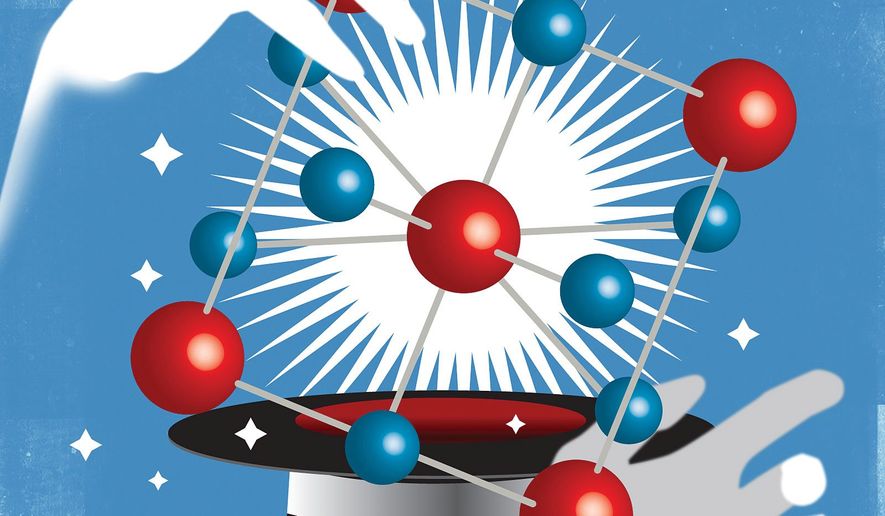OPINION:
Titanium is a superstar metal. It is as strong as steel, but less dense, which makes it lighter. It can withstand high temperatures and other stresses. These traits make it ideal for use in aircraft, spacecraft, and defense applications.
It is resistant to corrosion, so it is perfect for a range of wet uses from power plant pipes to desalinization plants and ship hulls. Titanium bonds well with human bone, making long-lasting joint replacements possible. It has even found its way into consumer applications, from bicycles to laptops.
Problem is, making titanium metal can be a messy and costly business.
Over the past 70 years, turning rutile — a titanium mineral — into finished-product titanium metal has been achieved by the Kroll Process, a brute force series of steps that uses massive amounts of energy, generates large amounts of carbon, and creates a toxic intermediate product that must be dealt with.
What if there were a way to create titanium in a way that is cheaper, more energy efficient and easier on the environment?
In fact, there is.
About 10 years ago, University of Utah Metallurgical Engineering professor Zhigang “Zak” Fang had a scientific breakthrough. Hydrogen can be used to assist the production of titanium oxide into titanium metal. Mr. Fang received grants from the U.S. Department of Energy and worked with Boeing and other industry partners to turn his laboratory concept into a pilot program.
The process when scaled up has the potential to be an industrial breakthrough. Yesterday’s brute-force Kroll Process of creating titanium metal is well on the way to being replaced by Mr. Fang’s elegant so-called HAMR Process: Hydrogen Assisted Magnesiothermic Reduction.
The HAMR Process can make titanium metal using 53 percent less energy at a far lower cost and results in significantly reduced carbon emissions. When linked with renewable energy sources there is the potential to create “zero carbon titanium.” In addition, it can be used as an input to produce titanium 3D printing powder.
At Hyperion Metals Limited, an Australian company with operations in Tennessee and Utah, the promise of Mr. Fang’s work is on display.
Titanium produced by the HAMR Process can lighten and decarbonize the airline sector and the auto industry, especially with the coming boom of electric vehicles, which already face weight challenges because of their heavy batteries. HAMR-created titanium can do the same for the medical and medical-device industries. It can even decarbonize and lower the cost of everyday products that use titanium such as golf clubs.
The HAMR Process has the potential to bring the cost of titanium metal to roughly the cost of making stainless steel and aluminum. Over time, titanium will be cheaper than stainless steel and aluminum. Given its superior strength, weight and anti-corrosion characteristics, the choice of metal will be a no-brainer.
For companies that use titanium, there is an added benefit to the HAMR Process. Corporations are under increasing pressure to set and meet goals related to ESG — Environmental, Social and Governance guidelines. That means they must demonstrate they are good citizens of the world in addition to providing strong returns for their investors.
Manufacturing companies are under particular scrutiny because of their high carbon emissions, outsized energy consumption and often-toxic byproducts. Activist shareholders have been loudly urging companies to clean up their acts, and not just in the products companies directly produce, but also in their end to end supply chain, from the titanium sourced for an Apple watch to the titanium used to lightweight a Bugatti Veyron
The risk of not moving in that direction goes beyond negative publicity. Companies with low ESG scores are being left out of the portfolios of asset managers who are increasingly bound to follow ESG guidelines when selecting investments for their clients. For manufacturers that use titanium, the HAMR Process offers not only a preferred alternative for the planet but for companies’ sustained viability.
And there is a benefit for the U.S. The HAMR Process is fundamental to the Titan Heavy Mineral Sand project in Tennessee, which will create hundreds of well-paying jobs. Building a domestic supply chain for a metal as vital as titanium also makes national security sense. Currently, the U.S. is the world’s second-largest importer of titanium feedstocks, which makes it dangerously reliant on suppliers in other countries that sometimes do not have America’s best interests at heart.
Because of its many attractive properties, the use of titanium is sure to grow in coming years. Doesn’t it make sense that it is produced as cleanly and cheaply as possible here in the U.S.A.?
• Anastasios Arima is CEO, managing director and co-founder of Hyperion Metals Ltd., which owns the Titan Project in Tennessee.




Please read our comment policy before commenting.